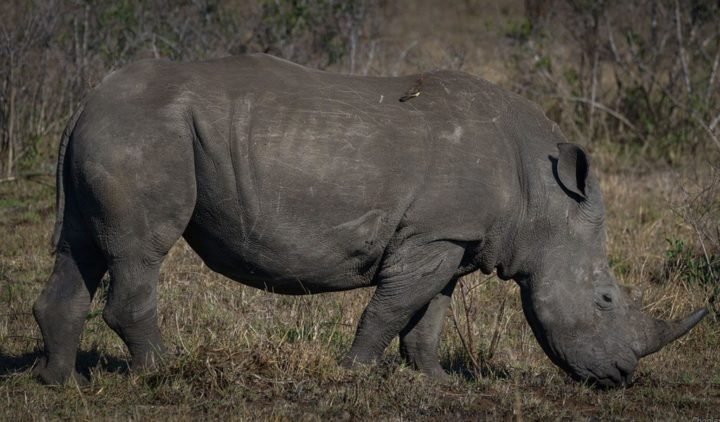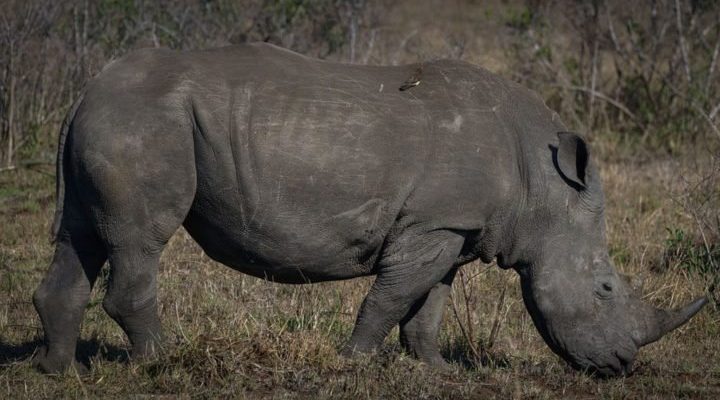
Now, let’s dive into how this incredible animal evolved over time. The Javan rhino, with its unique traits, helps us understand *not only* how species adapt, but also why some struggle to survive in today’s world. From ancient relatives to modern-day conservation efforts, the story of this magnificent beast is one of resilience and change.
Origins of the Javan Rhinoceros
To appreciate the Javan rhinoceros, it’s essential to start at the beginning. The ancestors of modern rhinos first appeared around 55 million years ago during the Eocene epoch. These early rhinos were quite different from what we see today. Imagine a creature the size of a horse, with a different horn shape and softer skin. They roamed a variety of environments, including forests and grasslands.
The evolutionary path of the Javan rhino branches off around 1.2 million years ago. It’s one of the most recent species of rhinos to evolve, diverging from other species like the Indian rhinoceros. This split likely happened due to climatic shifts and geographical changes that isolated populations. Picture a huge landmass being divided by rising waters or shifting tectonic plates. As the environment changed, so did the rhinos.
Key Characteristics of the Javan Rhinoceros
The Javan rhino is known for its distinctive features. It weighs between 1,300 and 2,200 pounds, making it one of the smallest rhino species. Unlike its relatives, it has a single horn that can measure up to 10 inches in length. This horn isn’t just for show; it plays a crucial role in defense and mating displays.
But here’s the thing: the thick, folded skin of the Javan rhino is its most striking feature. It’s reminiscent of armor, helping protect it from both predators and the elements. And unlike many other rhinos, this species prefers dense, tropical forests, blending naturally into its surroundings. You might say they’re nature’s introverts—more comfortable in silence than in the spotlight.
Historical Habitat and Range
Originally, the Javan rhinoceros roamed across Southeast Asia, covering a vast range that included parts of India and China. However, its habitat has shrunk significantly due to human activity and environmental changes. Imagine a bustling city growing where once there were lush forests and grasslands. As we developed land for agriculture and urbanization, the rhinos lost their homes.
Today, the Javan rhino is found in only one place: Ujung Kulon National Park in Indonesia. This park serves as a sanctuary for the few remaining individuals. Sadly, their restricted habitat reflects a broader issue for many species around the globe—they’re losing the places they once thrived. Conservation efforts are crucial to ensure this unique species doesn’t disappear entirely.
Behavior and Diet of the Javan Rhinoceros
Javan rhinos are known for being solitary creatures. They tend to thrive on their own rather than in groups, much like some people prefer quiet evenings to big parties. They primarily feed on leaves, shoots, and fruits found in their forest home. Imagine a buffet of greenery, where this gentle giant roams slowly, munching on whatever looks tasty.
Interestingly, their diet plays a role in the ecosystem. By feeding on certain plants, they help maintain the balance of their environment. If you think about it, every animal plays a part in its habitat, and the Javan rhino is no exception. Unfortunately, their selective feeding habits make them vulnerable to changes in their environment, particularly as deforestation impacts food sources.
Threats to Survival
Despite being a unique species, the Javan rhinoceros faces numerous threats. One major challenge is habitat destruction. As mentioned before, urbanization and agriculture continue to shrink their living space. What was once a vast territory is now reduced to a fraction of its former size—a sobering thought for any species.
Additionally, poaching poses a significant risk. Although fewer Javan rhinos are targeted compared to other species, the demand for rhino horns still exists. This demand can lead to illegal hunting, which threatens their already fragile population. It’s a heartbreaking cycle, where the future of this majestic species hinges on human actions.
Conservation Efforts
Fortunately, there are dedicated individuals and organizations working to save the Javan rhinoceros from extinction. Conservation efforts in Ujung Kulon National Park focus on habitat preservation, anti-poaching measures, and even breeding programs. These initiatives aim to increase the population and ensure they can thrive in their natural habitat.
Community involvement is essential as well. Educating locals about the importance of the Javan rhino and its role in the ecosystem helps create a sense of stewardship. Honestly, when people understand what’s at stake, they’re more likely to protect their local wildlife. It’s a win-win—protecting a species and promoting a healthier environment.
Final Thoughts on the Javan Rhinoceros
The evolutionary history of the Javan rhinoceros is not just a story of a species; it’s a reflection of the world’s changing landscapes and the impact of human activity on nature. Understanding their past helps us appreciate the urgent need for conservation today. Each Javan rhino represents a piece of history, and losing them would be losing a part of our planet’s heritage.
As we wrap up, remember that these gentle giants deserve our protection and respect. Their story is ongoing, and with the right efforts, we can help ensure that the Javan rhinoceros continues to roam its forest home for generations to come. It’s our responsibility to protect the incredible diversity of life on Earth, starting with the fascinating history of the Javan rhinoceros.

